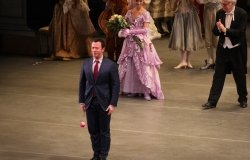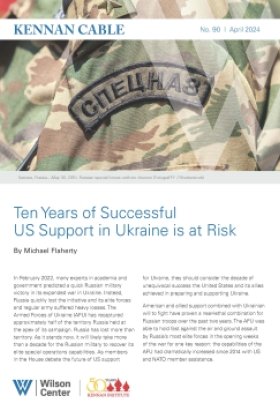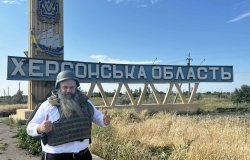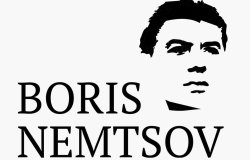Book Discussion: <i>The Politics of Inequality in Russia</i>
Income inequality in Russia bears striking similarities to inequality in the United States--both countries have seen a growing concentration of incomes among the very highest-earning groups and stagnant wages among lower- and middle-income strata. Poverty rates are also comparable. As in the United States, income inequality has become an issue of serious concern for policy makers. Unlike the United States, however, Russia has huge differences in living standards across its 83 regional territorial units. Taking advantage of the variation in levels of income, economic structure, political regime characteristics, and income distribution across the regions, "The Politics of Inequality in Russia" investigates the political and economic reasons for the rise in inequality.
Overview
“Does inequality matter? In Russia, President-elect Putin has repeatedly called attention to the problem of excessively high inequality,” said Thomas F. Remington, Goodrich C. White Professor of Political Science, Emory University, at a 27 March 2012 presentation at the Kennan Institute of the findings of his new book, The Politics of Inequality in Russia. Putin notes with alarm that one-eighth of Russian citizens lives below the poverty line, and that “…a certain level of differentiation of incomes is natural for a mature market economy, but an excessive gap is seen as injustice and serves as a source of social tension.” Putin’s solution, according to Remington, is that the middle class should become a “social majority.”
Poverty and income inequality are not solely Russian concerns, Remington observed. The United States and Russia have a very similar poverty rate of about 13-15 percent. Both countries have sizeable wealth inequalities which have grown steadily over the past two decades. Yet the consequences of income inequality in Russia and the United States are different. For example, in the United States, areas with higher income inequality have higher levels of infant mortality and lower levels of overall health. By contrast, in Russia areas with higher income inequality have lower rates of infant mortality and poverty. Remington observed that the divergence among regions in Russia with regards to both income levels and levels of inequality is widening.
In his book, Remington assessed how levels of democracy, based upon criteria including media freedom, turnover of elites, absence of corruption, and others, correlate with economic development over time in different Russian regions. He found that: “even controlling for other determinants of income inequality, more democratic administrations at the regional level in Russia feature higher levels of inequality.” More democratic regions also enjoyed higher wages (controlling for variables such as natural resource production and urbanization), higher social welfare payments, and lower rates of social dependency (i.e. a higher percentage of workers in the workforce).
Remington cross-checked his results with the 2003 World Bank NOBUS survey of households and the 2005 Business Environment and Enterprise Performance Survey (BEEPS) of business executives. Both surveys corroborated that more democratic regions had higher wages. The BEEPS survey further indicated that businesses in more democratic regions paid lower bribes and were more likely to make capital investments. Firms in both high- and low-democracy regions indicated uncertainty with regard to regulations and reported the need for constant interaction with the government.
Remington noted that effective governance is the essential by-product of high-democracy regions, which in turn translates into corporate success and higher wages. According to case studies cited in the book of six regions, it is the governors that determine the regional setting for business-government relations. For example, in Perm the business elites interviewed in the case study say that business-government relations are characterized by “civilized mutual pressure” where “each side has its own resources” as they cooperate to ensure economic growth, employment, and social services.
Remington observed that business-government relations in Russia are not going to follow the classic neo-liberal model of limited state interference. Russia has a long tradition of enterprises that are deeply embedded in the provision of social welfare programs. The state’s capacity to regulate a market economy is hampered by its Soviet legacy and political battles of the post-Soviet transition. Finally, the ability of social resources, labor and capital, to shift to more productive locations or purposes is restricted. Under such conditions, close cooperation between business and government becomes the norm. In the more democratic regions, that relationship is based upon mutual cooperation and shared decision-making. In less democratic regions, that relationship is one based upon rent-seeking and patronage.
In these respects, Russia is a typical post-communist state that gives priority to rapid economic growth. The result of its economic policies has been the rapid growth of income inequality across and even within Russia’s regions. If inequality is “unacceptable, outrageously high” in Russia, Remington said, it is not because of poverty, but because of the “top 1 percent” problem. Greater openness and pluralism in certain regions have fostered not only higher wages on average, but also greater differentiation, or concentrations, of earnings.
If Putin’s goal is to accelerate the growth of the middle class relative to the higher end of the income scale and thereby reduce inequality, Remington contended, the solution is to promote and empower institutions that broaden representation and participation in policy decision-making. With broader interests taken into account in setting policy, the result would be a broader risk pool for social insurance, the provision of public goods and services (such as security, law enforcement, and education) to wider strata of society, and lower barriers to entrepreneurship.
“My research confirms the conclusion reached by observers of income distribution trends in the United States and other countries,” concluded Remington, “The rising income inequality observed throughout the developed world in recent decades is a product both of economic and political conditions.” The test for the Putin regime’s political will is whether it will adopt the necessary, but politically difficult, policies that will lay groundwork for accelerated growth of the middle class.
By F. Joseph Dresen
Blair Ruble, Director, Kennan Institute
The Kennan Institute speaker series is made possible through the generous support of the Title VIII Program of the U.S. Department of State.
Speaker
Hosted By

Kennan Institute
The Kennan Institute is the premier US center for advanced research on Russia and Eurasia and the oldest and largest regional program at the Woodrow Wilson International Center for Scholars. The Kennan Institute is committed to improving American understanding of Russia, Ukraine, Central Asia, the Caucasus, and the surrounding region though research and exchange. Read more
Thank you for your interest in this event. Please send any feedback or questions to our Events staff.










